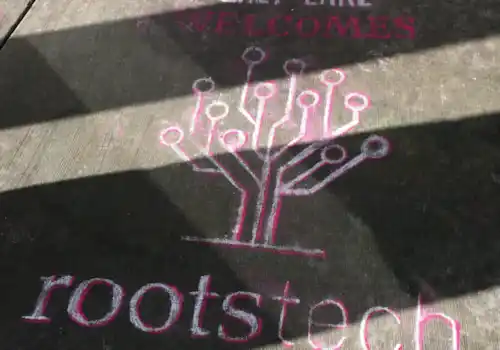20 September 2019
|
The discovery of a black and white photograph of a beautiful young woman inspired Ruth Badley to tell the unknown story of the grandmother she never knew in this real-life family history research story...
The discovery of a black and white photograph of a beautiful young woman inspired book author Ruth Badley to tell the unknown story of the grandmother she never knew. Her research led to a multi-generational memoir and a deeper understanding of her mother and herself
The sorting and clearing of a parent’s possessions has to be one of the most painful tasks facing a newly bereaved adult child. After my mother, Sylvia died, it seemed an overwhelming ordeal, so it was no accident that on one particularly difficult afternoon I took some time out to sift through the old family photographs. Seeing familiar faces in different, happier times was the comfort I needed.
Stored behind the folders of old holidays snaps was a larger, black and white image of a young woman I’d never seen before. It was a formal, studio portrait and it took my breath way, because I could see a little of myself in her face. I turned it over, hoping for a clue to the woman’s identity. There, in my mother’s familiar looped handwriting, it simply said, ‘My Mother’.
This, I deduced was Rose Dehaan, née Wagenhuizen, the grandmother of Dutch heritage that I vaguely knew had died ‘in childbirth’ in Stepney Green, East London. She’d apparently chosen the name, Sylvia, for her baby. That was all I knew because that was pretty much the extent of my mother’s knowledge. There was something about the way the camera had captured Rose, looking so confidently into her future and ours, that I couldn’t lay aside. There was something else too.
Looking back to understand
In the last days of my mother’s life, following a stroke, we’d been able to communicate in ways that had somehow eluded us before. As a result of the stroke, my mother spoke in a strange jumbled language, yet her meaning was clear to me. It prompted me to wonder why our relationship had always been so difficult and in the aftermath of grief I tried to make sense of it by writing down some of my most vivid childhood memories.
A few months later the structure of a book was starting to take shape but I only had part of the story and I was living overseas at the time. I hung the portrait of Rose on my wall and with the help of the internet and email, immersed myself in the history of the Jewish East End of London and my grandmother’s world. My aim was to shed some light on the circumstances surrounding my mother’s birth and my grandmother’s short life.
A death certificate, I now realise, is also proof of life. Rose materialised into flesh and blood after a copy of this document popped into my inbox. It told me my grandmother worked as a cigarette maker and that she died in hospital, on 13 May, 1930, not in the process of giving birth to my mother, but three days later. Her Stepney Green address was a terraced house in the heart of the East End’s Jewish community and home to many more of my mother’s relatives. The cause of death was given as post-partum eclampsia, a condition that can still kill new mothers today if the symptoms go unrecognised. Rose was 25. The death certificate was a source of important new information.
Hospital records
I contacted the hospital where Rose died but the archivist told me that no patient records from that time had been kept. Part of me was relieved. I wasn’t sure I was ready to see my grandmother’s name officially recorded as a fatality but I still wanted to know the course of treatment for women presenting with her symptoms in 1930.
Instead, I consulted obstetrics records, made available to me through the archivists at Barts NHS Health Trust. There I found the symptoms, treatments and outcomes for the various complications of pregnancy during 1930, recorded in a clear hand. A handful of patient names, but a smaller number than I expected, were written in red ink, signifying mother or baby and in one case, both, had died.
My mother always joked that she came into this world on a wing and prayer and as I know Rose had a home birth, my mother’s survival owed much to the midwife in attendance. Indeed she may have been the first to recognise Rose’s symptoms and her need for emergency hospital treatment.
Eclampsia is a dangerous condition, unique to pregnancy and if the condition presents itself in the third trimester, delivery of the baby is generally the recommended course of action. Very occasionally the condition can occur in the days and weeks following delivery. Drugs to control blood pressure, and prevent the onset of the potentially fatal seizures that can follow, are more effective today than would have been the case in 1930.
The joy a new baby brings swiftly turned to heartbreak for Reuben and his large extended family. A widower at just 24 years old, he naturally turned to them for help. Soon after Rose’s death, Sylvia was adopted by her great Aunt Becky and her husband Jack. Becky became a controlling adoptive mother and this, combined with the jealousy of Reuben’s second wife, and the interruption caused by the war years, meant Sylvia had little contact with her father – the one person that could have told her what she longed to know about her birth mother.
The conspiracy of silence that prevailed around Rose and all that had gone before proved very damaging. The significance of such a fundamental loss was never examined in my mother’s lifetime and as I started to weave our story together I realised that many of the same mistakes and human frailties experienced by one generation, were repeated in the next.
The impact of a humble cigarette maker’s early death rippled across the relationships in my family in many unexpected ways. It falls to me, her granddaughter, through these words, to break the silence and give Rose a longer life than she had.
All images © Ruth Badley













